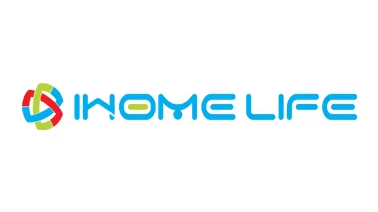JD wields the "Brightness Divine Sword"—could it become a turning point for the smart projector industry?
2025-05-10
I. Without brightness, how can there be a big screen?
Big Screen Guy has learned that many consumers mistakenly believe "projector brightness is just a label for final image brightness," similar to how an LCD TV can be 300 nits or 500 nits without affecting screen size. This perception is a misunderstanding of projection display technology.

In reality, the projector industry has a longstanding saying: "Buying a projector means buying brightness—every unit of brightness comes at a price." This highlights the core value of brightness in projection displays. Big Screen Guy emphasizes that brightness fundamentally determines at least four key performance aspects:
1. Maximum clear image size – The higher the brightness, the larger the sharp image a projector can deliver. If consumers want a big screen, they must prioritize brightness.
2. Image quality at the same size – Brightness directly impacts contrast, color accuracy, and resistance to ambient light. High brightness is essential for superior picture quality.
3. Compatibility with anti-light screens – Using an anti-light screen demands extra brightness. For example: In well-lit rooms, a 100-inch screen requires 2,000+ ANSI lumens for optimal performance. In dark rooms, a standard white screen may only need 1,000 lumens for decent results.
4. System-level engineering trade-offs – Higher brightness isn’t just about a stronger light source; it requires upgrades to optics, cooling, and power systems. This leads to: Higher costs and Larger size and weight.
From a technical perspective, achieving high brightness, low cost, and a compact size simultaneously is an "impossible triangle" under current technology. This contradiction is precisely why some brands resort to misleading brightness claims—by exaggerating specs, they can market products as "bright, cheap, and portable," creating an illusion that defies physics.
Compounding the issue, the recent boom in smart large-screen projectors has attracted opportunistic brands. Leveraging the rapid growth of e-commerce and short-video shopping platforms, these players flood the market with misleading quality claims, making the sector a hotspot for false advertising. This trend has become a major obstacle to the healthy development of the smart projector industry.
II. JD Takes on Industry Woes, Rallying Forces for Change
The practice of overstating brightness specifications benefits no one except a handful of short-sighted merchants. In fact, it erodes consumer trust in the entire industry, stifles long-term market growth, and ultimately shrinks the very "opportunities for speculation" these bad actors rely on. This is why combating false brightness claims has naturally become a shared mission for industry leaders and quality-focused brands.
Enter JD.com, now raising the banner against this malpractice. According to reports, the retail giant is implementing a rigorous new policy: All JD-self-operated projection products must pass strict third-party brightness verification before listing. Certified products will carry dual badges—an official "Brightness Certification" mark and a "True Brightness, No False Claims" label—backed by JD's unprecedented "10x Compensation Guarantee" for any verified brightness misrepresentation.
JD is leveraging its self-operated platform's credibility to create a consumer "safe harbor"—a move that achieves dual strategic impacts:
1. Market Purification: Introducing a concrete solution to cleanse the industry
2. Competitive Disruption: Outmaneuvering rival sales channels (particularly livestream and short-video platforms that have siphoned JD's traffic while becoming hotspots for exaggerated specs)

This "Self-Operated Brightness Certification" creates value across the ecosystem:
1. For JD: Enhances platform premiumization
2. For Manufacturers: Builds a quality-focused supply chain alliance
3. For the Industry: Accelerates healthy growth of smart projection technology
Some analysts now speculate whether JD could evolve into a de facto standards authority—if this certification model expands beyond projectors to other product categories plagued by quality inconsistencies (think: more performance certifications, replicable quality frameworks). This would represent nothing less than a strategic masterstroke in redefining e-commerce competitiveness.
In the chaotic battlefield of 200+ competing projector brands, JD's initiative stands out as a groundbreaking move to restore integrity. It's a win for the projection industry's development, a win for e-commerce evolution, and most importantly—a win for consumers.
III. Only by rebuilding trust in product quality can projectors achieve sustainable growth.
The projector market faces a fundamental consumer paradox: buyers want "big screens at small prices," yet true large-screen performance requires higher brightness - and consequently higher costs. This inherent contradiction creates the perfect breeding ground for unscrupulous sellers to cut corners.
When consumers lose faith in projection technology's value proposition and quality standards, the entire industry suffers - ultimately undermining the very "large-screen viewing experience upgrade" consumers desire. The urgent challenge lies in creating:
1. A quality-controlled marketplace
2. Performance-verified products
3. Continuous technological innovation
Earlier attempts like the CVIA brightness standard failed to gain traction, rejected by both international brands (resisting localization) and smaller domestic players (unable to comply). This reflects the industry's fragmented, chaotic competition.
JD's "Self-Operated Brightness Certification" now breaks the deadlock by targeting the most influential sales channel. This "Chinese-style innovation" is already creating ripple effects - one global brand is reportedly adapting product lines to meet JD's requirements.
Brightness complaints account for nearly 70% of projector grievances. Solving this alone could transform the market. However, manufacturers face a dilemma:
✔️ Pro: Eliminating false claims improves credibility
✖️ Con: Compliance may raise costs and industry average prices
Big Screen Guy argues the industry must simultaneously address another toxic practice: excessive price wars. While consumers want affordable large screens, sub-1000 yuan products cannot deliver 100-inch quality. Establishing 1500 yuan as the new entry point (instead of <1000 yuan) could create space for meaningful quality improvements.
With market growth slowing to single digits (from 30-50% previously), the industry has entered a maturity phase where quality differentiation becomes critical. Yet challenges remain:
1. Some brands practice "dual-track" sales (JD-certified vs non-compliant models)
2. Smaller brands feel the "shanzhai phone" existential crisis
3. Certain foreign brands ignore the certification initiative
As JD and pioneer brands lead this quality revolution, consumers must "vote with their wallets" to accelerate change. Only through aligned efforts can the industry establish sustainable foundations for healthy development.

Name: Janice
Tel: +86 19926651189
Email: sales11@ihomebox.com.cn

